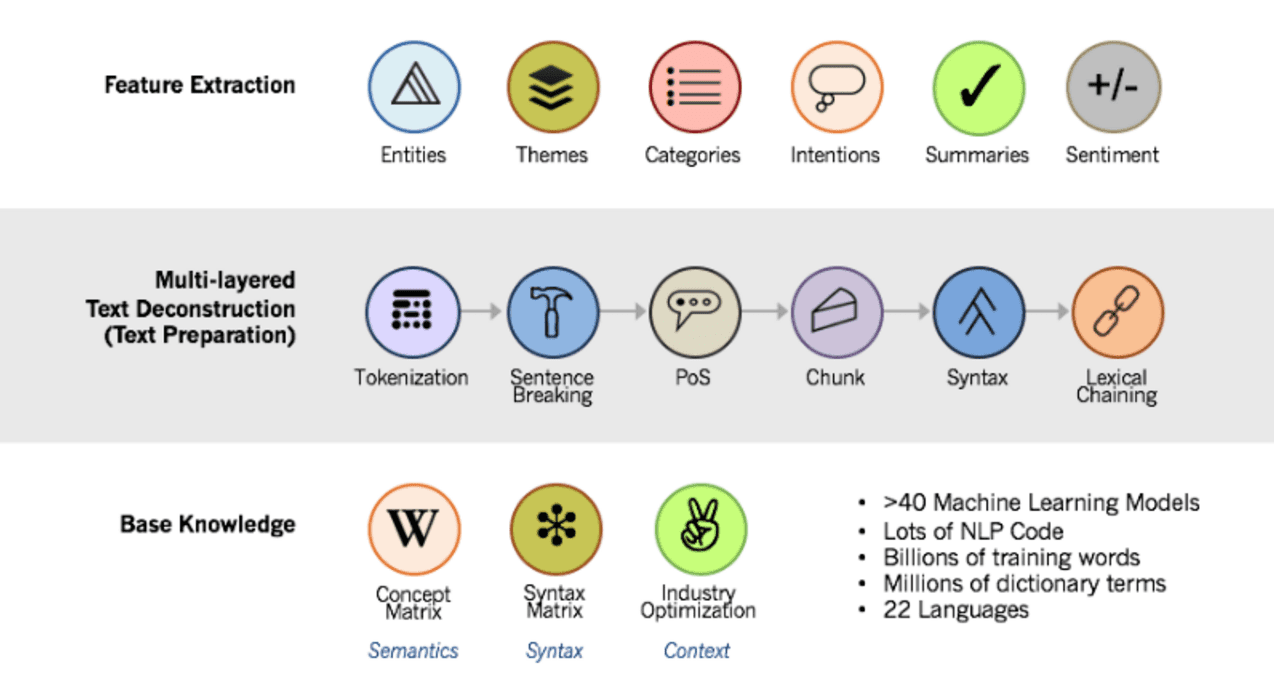Last updated on April 11th, 2024 at 08:45 am
Solve Real-world Text Analytics Problems With NLP!
Natural language processing (NLP) helps machines analyze text or other forms of input such as speech by emulating how the human brain processes languages like English, French, or Japanese. NLP consists of ‘natural language understanding’ and ‘natural language generation’ which help machines create a summary of the information or assist in taking part in conversations.
With the advent of natural language processing, services like Cortana, Siri, Alexa, and Google Assistant are finding it easier to analyze and respond to requests from users. This is opening up many new possibilities in human-machine interactions and helping improve existing systems and services.
In this article, we will cover how NLP is helping provide solutions for various requirements of text analytics in different sectors.
Significance of NLP in modern times

NLP can analyze massive amounts of text-based data with consistency and accuracy. NLP courses help summarize key concepts from large unstructured complex texts. It also helps in deciphering or analyzing ambiguous statements or sentences. It can draw connections and also investigate deeper meanings behind seemingly normal data in the form of text.
With the massive amounts of randomized forms of textual data that is generated on a daily basis, automation is highly necessary for this field to analyze the large amounts of data from text efficiently and effectively. Ranging from text posted on social media to customer service, natural language processing is powering text analytics which is making life easier for both consumers and corporations.
How text analytics along with NLP is helping businesses?
Text analytics can be described as a process of analyzing a massive or specifically targeted volume of unstructured textual data and translating it into quantitative information to gain valuable insights through patterns and trends.
With the help of additional visualization of this data, text analytics allows corporations to understand the sentiments, deeper meaning, or compact information behind this data and helps them take data-backed or data-centric decisions for improved results through better performance or profit.
These companies collect massive amounts of unstructured textual data from sources like social media, e-mails platforms, chat services, and historic data from previous interactions or third parties. This could prove to be a challenge without the help of natural language processing which powers text analytics, helping analyze the massive amounts of data without the need to stop or for human interference.
The same amount of data, being manually processed seems like an impossible, never-ending task. Manually processing even a tiny bit of the colossal amount of data that is generated daily would definitely take a lot of manpower. Hence, it is not cost-effective and would also lead to inaccuracy and duplication. This is where text analytics comes to the rescue.
With the help of text analytics, companies can excavate meaning and sentiments from unstructured textual data sourced from social media posts, content inside e-mails, chat services, and surveys or feedback.
This helps businesses identify patterns and trends which lead to providing customers with improved experiences by analyzing service or product issues and customer expectations through market research and monitoring with text analytics.
 Here are some real-world applications of text analytics and natural language processing:
Here are some real-world applications of text analytics and natural language processing:
Customer care service
Data generated from surveys, chats, and service tickets can help companies improve the quality of customer service by increasing efficiency and decreasing the time taken in resolving problems.
Illegal activity and fraud detection
Text analytics helps in analyzing unstructured data from various internal or external sources to prevent fraud and warn governments or companies of illegal and fraudulent activities.
 Social media analytics
Social media analytics
Text analytics is being used by brands to analyze customer preferences and expectations through the extraction of sentiments and summarized opinions from textual data sourced from social media platforms like Facebook and Instagram.
Text analytics and NLP are increasingly becoming more effective for companies to depend on and encouraging them to take more data-backed decisions. This need is making way for better, more accurate, and faster analytical tools and technologies in the future.









